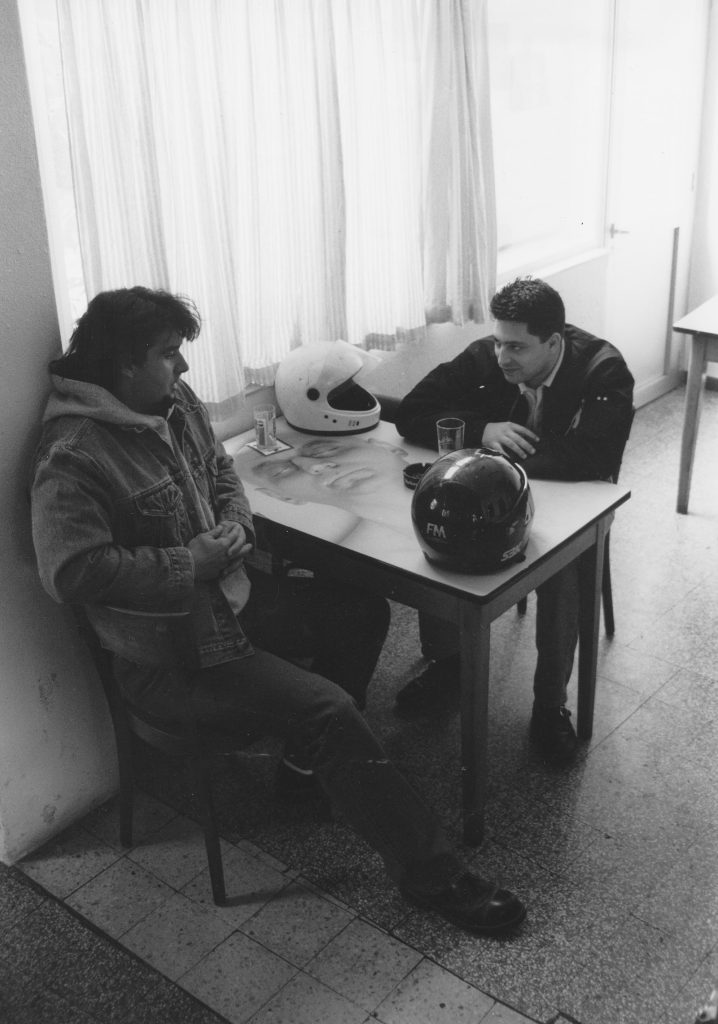Modus operandi
Carlo Alberto Buzzi è un artista italiano, conosciuto per i suoi interventi nel contesto urbano.
Carlo Buzzi si serve degli strumenti propri della comunicazione pubblicitaria. Opera interventi che coinvolgono il contesto urbano. Normalmente utilizza il comune poster tipografico. Un significativo numero di manifesti viene esposto in pubblica affissione. L’operazione è documentata fotograficamente. Il lavoro sarà in seguito formalizzato grazie alla produzione di un numero limitato di “quadri” (riproduzioni fotografiche, manifesti “strappati”).
Carlo Buzzi ha realizzato la prima opera-operazione “pubblica” nel 1990 in collaborazione con il gallerista Luciano Inga-Pin di Milano. Si trattava di una pagina di pubblicità acquistata sulla rivista Flash Art. L’inserzione riproduceva centralmente un comune scopino da bagno, nella parte superiore la scritta “PICASSO”, nella parte inferiore la didascalia “orario 20-22”. Nel 1991 un soggetto simile fu esposto a Milano su manifesto tramite pubblica affissione, canale espressivo in seguito privilegiato dall’artista.
Costruzione formale (la simulazione di “finto evento”) e prassi (esposizione con tasse regolarmente pagate, mai abusiva) indicano l’intenzione di introdursi nel sistema della comunicazione pubblica in “punta di piedi”, contrapponendosi ad esperienze artistiche espresse nel medesimo contesto – contemporanee o appartenenti ad un recente passato – connotate da impronte ideologiche.
Dalla riproposizione del tema Picasso/scovolino/mostra d’arte artefatta, ad altri “provocatori” e improbabili incontri (Van Gogh con una grattugia), Buzzi esplora il dualismo arte/pubblicità in reali, e nello stesso tempo fittizie, campagne pubblicitarie.
Nel 1994 realizza un manifesto che lo riproduce semplicemente ritratto di schiena, il primo privo di alcun altro indizio.
Carlo Buzzi is an Italian artist, known for his work in the urban context.
He uses the tools of advertising. Normally he works on interventions involving the urban context, using the common typographic poster. A significant number of posters is exposed in public posting. The procedure is then documented photographically. The work is then formalized through the production of a limited number of “pictures”.
Carlo Buzzi made the first “public” operation in 1990, in collaboration with gallery owner Luciano Inga-Pin in Milan. It involved the purchase of a page on the magazine Flash Art. This page showed the image of an ordinary toilet brush, with the word “PICASSO” on the top and the writing “20-22 hours” at the bottom of it.
In 1991, the same subject was published in the streets of Milan on a poster, with a regular posting. Formal construction (simulation of “fake event”) and praxis (exposure with regularly paid taxes, never abusive) indicate the desire of the artist to break into the public arena in “tiptoe”, as opposed to the ideological connotations that characterize some contemporary or slightly previous works, made in the same sphere by others artists.
Later on, due to a gradual “appropriation” of the media used by the artist, a more radical form of communication has been developed. In 1994, a poster with the presence of a single simple image reproducing his back to a half-length with no writing on it appeared.
The artist never decides to expose only a few copies of the posters, since his aim is to show his work to the whole city (or to some limited areas, when operating in very big urban centers). Between content (in reference to what he shows in the posters) and praxis (aim for artistic action – or part of it – outside of the traditional “withe cube”), it is much more important for him – and crucial – the second.
[ ARTWORKS ARCHIVE – CATALOGO RAGIONATO ]
Wikipedia










































